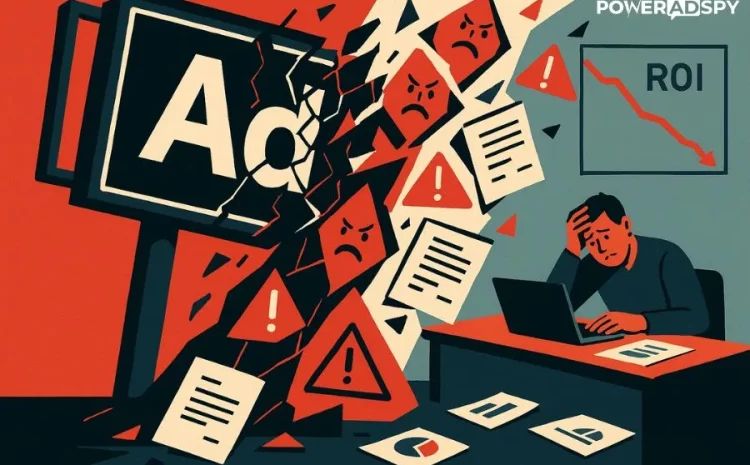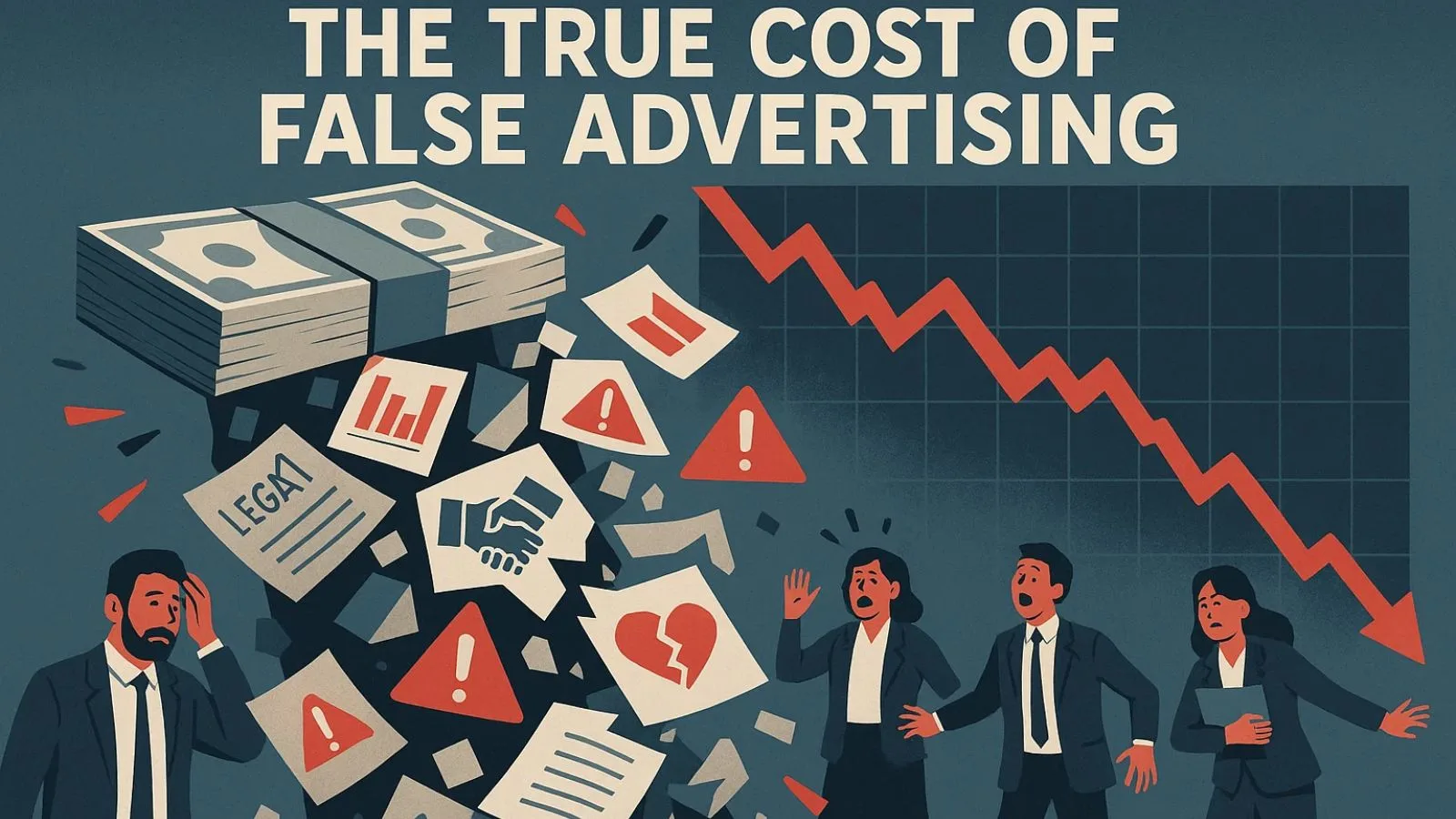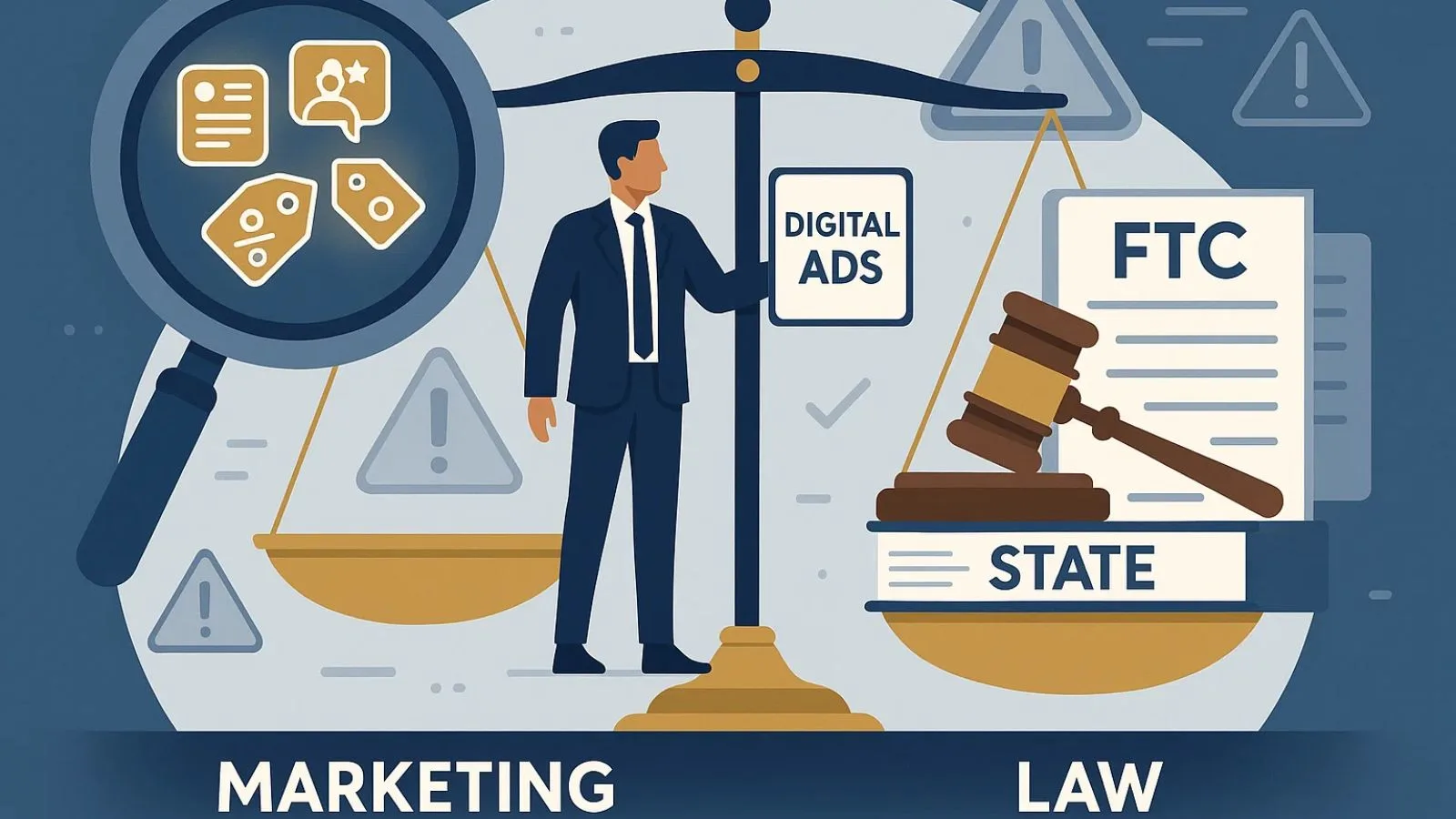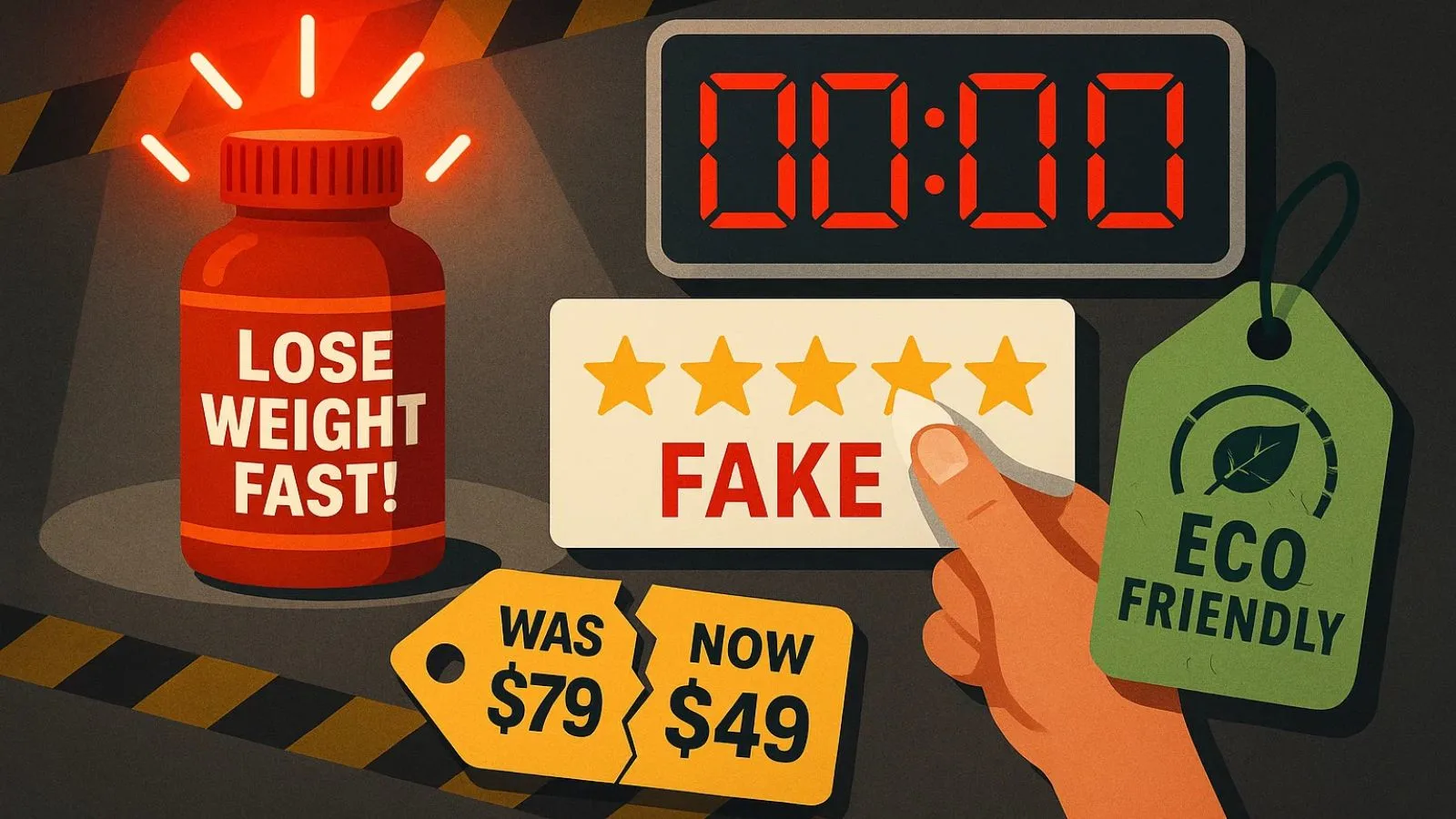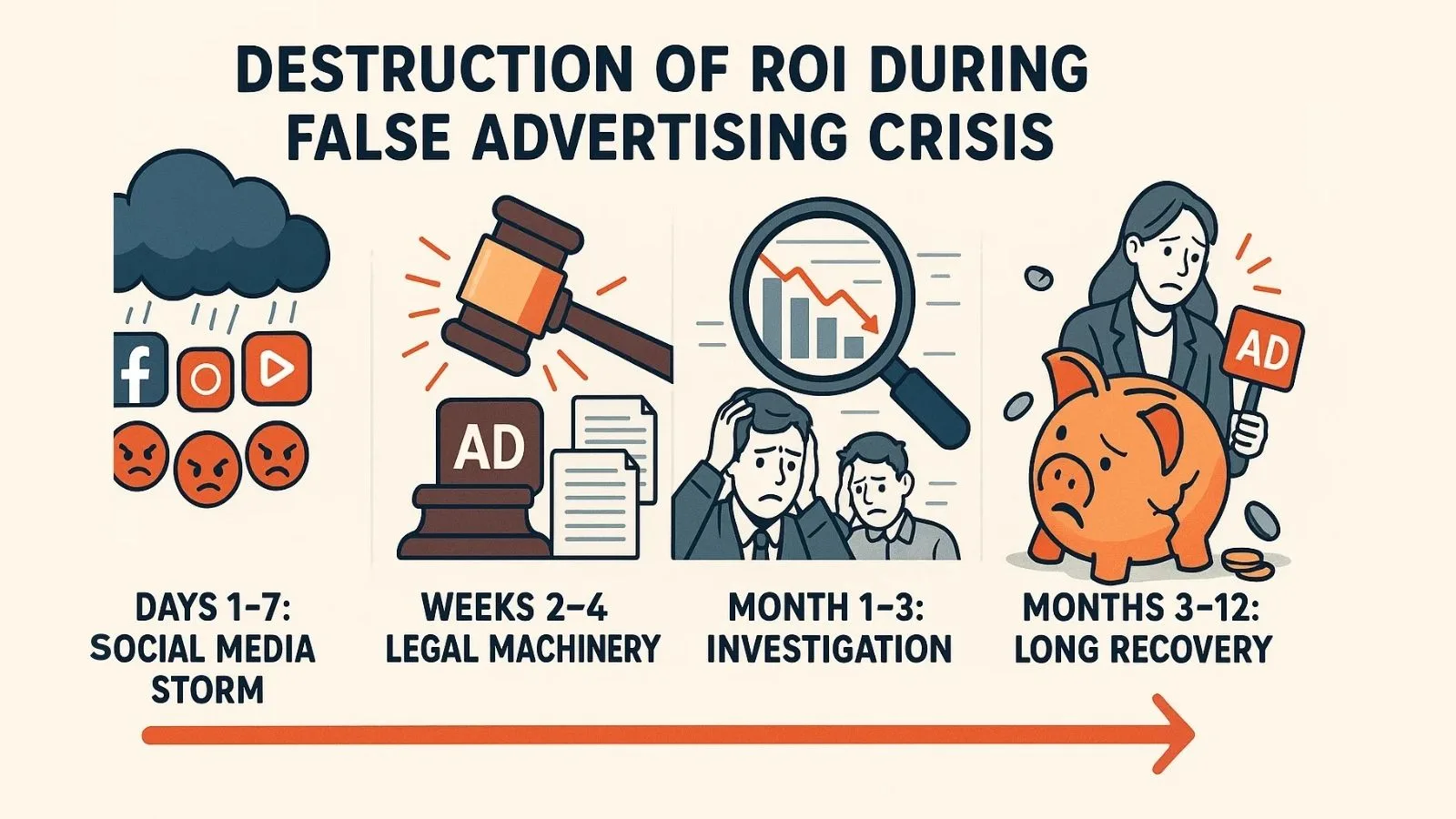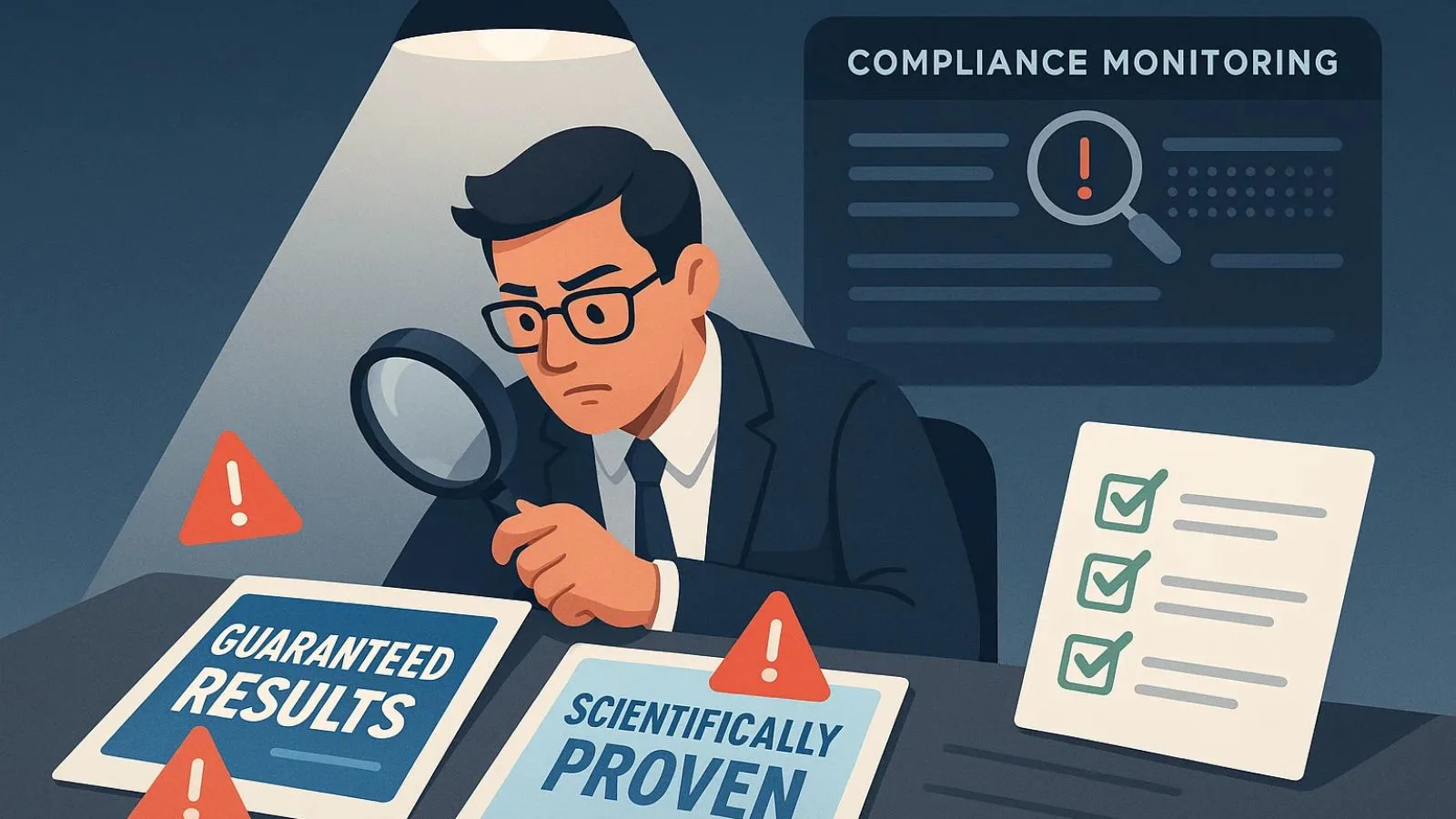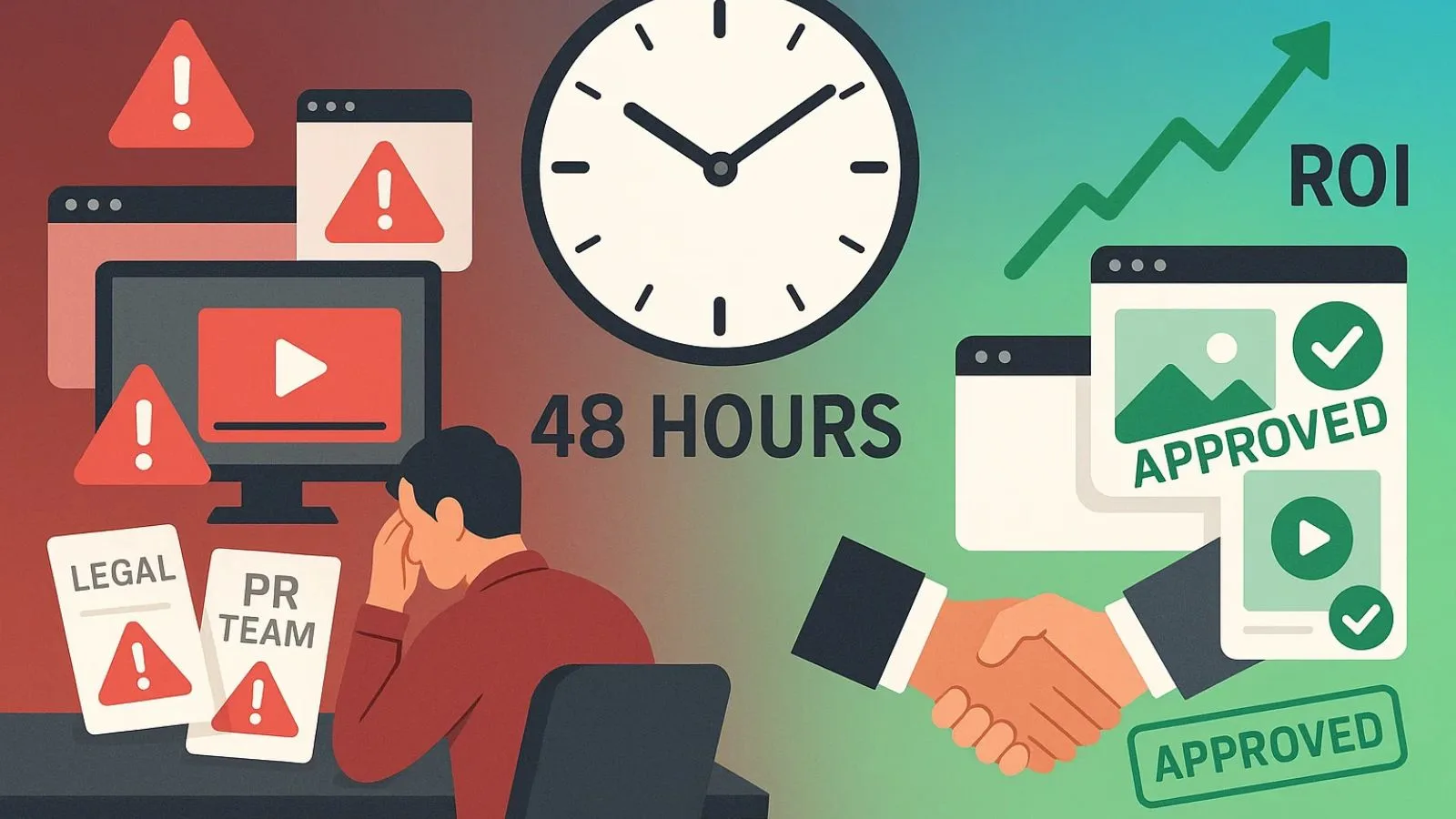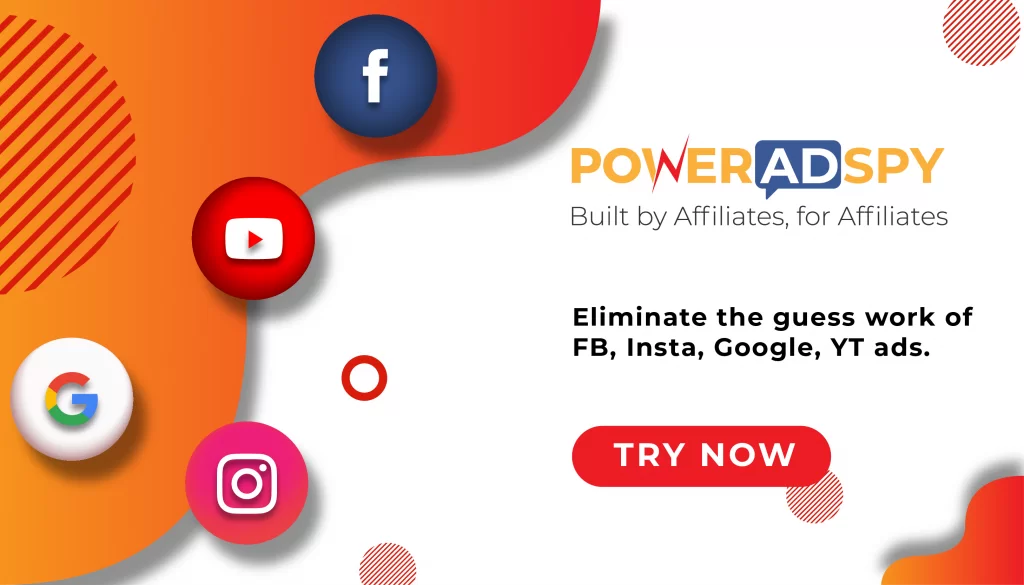How False Advertising Accusations Can Destroy Your Marketing ROI
Every marketer knows that getting noticed online is tough. You’re constantly trying new angles, testing bold claims, and pushing your messaging to stand out from the crowd.
However, here’s the scary part: one wrong move with your advertising copy, and you could face false advertising accusations, or even fall victim to Ad Fraud, which could completely wreck your marketing budget and brand reputation.
We’ve all seen it happen. A company runs what seems like a normal ad campaign, then suddenly—they’re all over social media for the wrong reasons.
Customers are angry, competitors are pointing fingers, and before you know it, lawyers are getting involved. The worst part?
Even if you didn’t intentionally mislead anyone, the damage to your business can be devastating.
Fraudulent clicks, fake impressions, or bots can make it look like your ads are performing when they’re actually draining your budget.
Consider this: when accusations start flying, or when ad fraud skews your data, everything comes to a halt.
Your campaigns get pulled, your team scrambles to figure out what went wrong, and you’re spending money on crisis management instead of growing your business. Meanwhile, your competitors keep running their ads while you’re stuck dealing with the mess.
The truth is, most marketers don’t realize how quickly things can spiral out of control, how expensive these situations get, or how ad fraud can silently sabotage their efforts.
You can protect yourself if you know what to watch out for, how to plan, and how to safeguard your campaigns from fraudsters.
Listen Podcast Now:
The True Cost Of False Advertising Accusations:
When marketing campaigns face legal scrutiny, the financial devastation extends far beyond courthouse doors.
The moment accusations surface, companies typically halt all related advertising efforts, instantly freezing marketing budgets that could span millions of dollars.
Legal defense costs alone average $150,000 to $500,000 for mid-sized companies, while Fortune 500 brands often spend upwards of $2 million just on initial legal responses.
The ripple effects multiply rapidly. Stock prices can plummet within hours of public accusations.
Volkswagen lost $26 billion in market value during its emissions scandal, while Wells Fargo’s deceptive practices cost it $142 billion in market capitalization over two years.
These aren’t just numbers; they represent real marketing budgets, team layoffs, and cancelled campaigns.
Brand trust erosion creates the most devastating long-term impact.
Consumer confidence studies show that 73% of customers permanently switch brands after false advertising controversies.
This translates to increased customer acquisition costs that can rise by 200-400% as companies struggle to rebuild credibility.
Hidden costs compound the damage: crisis management consultants, PR agencies working overtime, internal legal team hours, and executive time diverted from growth initiatives.
Marketing teams spend months recreating compliant campaigns while competitors capture market share.
Recent industry analysis reveals that companies facing these accusations require an average of 18 months to return to pre-incident marketing performance levels.
During this recovery period, marketing ROI typically drops by 35-60%, creating a cascading effect that impacts quarterly earnings, investor relations, and strategic planning capabilities for years to come.
Understanding False Advertising Laws: A Marketer’s Essential Guide:
Navigating the complex landscape of marketing regulations requires a solid understanding of the legal framework that governs advertising practices.
The Federal Trade Commission (FTC) serves as the primary watchdog, requiring that all marketing claims be truthful, substantiated, and not misleading to consumers.
What many marketers don’t realize is that intent doesn’t matter; even unintentional false advertising can trigger serious legal consequences.
False advertising laws operate on both federal and state levels, creating a web of regulations that vary significantly across jurisdictions.
While the FTC handles national enforcement, state attorneys general often pursue cases with their specific statutes.
California’s strict consumer protection laws, for instance, allow individual consumers to sue for damages, while other states focus primarily on regulatory penalties.
Digital marketing has introduced new complexities to traditional advertising law.
Social media campaigns, influencer partnerships, and automated advertising now fall under increased scrutiny.
The FTC has updated guidelines requiring clear disclosure of sponsored content, and failure to comply can result in hefty fines and campaign shutdowns.
Recent enforcement trends show regulators are particularly focused on health claims, environmental benefits, and pricing transparency.
Companies now face penalties ranging from $10,000 to millions in settlements, making legal compliance not just ethical but financially essential for protecting marketing budgets and brand reputation in a competitive marketplace.
Common Triggers: False Advertising Examples That Sparked Major Accusations:
Marketing disasters often begin with seemingly innocent claims that cross legal boundaries.
Understanding these false advertising examples helps marketers recognize danger zones before accusations destroy their campaigns and budgets.
1. Health and Wellness Missteps:
Weight loss supplements promising “lose 30 pounds in 30 days” without scientific backing have triggered countless lawsuits.
Beauty brands claiming “clinically proven” results without proper studies face similar scrutiny. These health-related claims attract immediate regulatory attention and consumer complaints.
2. Fake Urgency and Scarcity:
“Limited time offer” campaigns running indefinitely have sparked major legal challenges.
Retailers displaying fake countdown timers or claiming “only 3 left” when inventory remains abundant create consumer distrust and regulatory issues.
These tactics may boost short-term sales but often lead to costly legal battles.
3. Testimonial Manipulation:
Brands using fake reviews, paid testimonials without disclosure, or manipulated before/after photos frequently face accusations.
Social media influencers promoting products without revealing paid partnerships have triggered FTC investigations affecting entire marketing campaigns.
4. Pricing Deception:
Hidden fees, fake discount claims, and misleading “was/now” pricing structures consistently generate consumer complaints.
Companies advertising “free” products while charging mandatory shipping fees often find themselves defending false advertising accusations in court.
5. Environmental Greenwashing:
Sustainability claims without proper certification or evidence have become increasingly problematic.
Terms like “eco-friendly” or “natural” without substantiation attract both consumer advocates and regulatory agencies, leading to expensive legal proceedings and brand damage.
The Accusation Timeline: How ROI Destruction Unfolds:
When false advertising accusations surface, the financial damage follows a predictable and devastating pattern that most marketers underestimate.
Days 1-7: The Social Media Storm.
Within hours of accusations going public, social media explodes with negative sentiment.
Customer complaints flood your channels while competitors capitalize on your vulnerability.
Marketing teams scramble to pause campaigns, burning through ad budgets with zero return. Crisis management costs spike as you mobilize legal and PR teams for damage control.
Weeks 2-4: Legal Machinery Activates:
Law firms demand immediate documentation of every marketing claim.
Your creative teams halt all campaign launches while legal reviews consume weeks of productivity.
Customer acquisition costs skyrocket as organic reach plummets due to negative coverage. Revenue streams dry up as potential customers hesitate to engage with your brand.
Month 1-3: Investigation Deepens:
Third-party audits drain budgets while internal teams dedicate countless hours to compliance reviews instead of revenue-generating activities.
Conversion rates typically drop 30-50% during this phase as consumer trust erodes.
Investors begin questioning marketing spend effectiveness, often demanding budget cuts precisely when you need recovery investments most.
Months 3-12: The Long Recovery:
Brand rehabilitation requires 3-5x normal marketing spend to regain lost market position.
Customer lifetime value decreases as acquisition becomes more expensive and retention suffers.
Many companies discover that reputation recovery costs exceed the original campaign budgets by 400-600%, making prevention the only viable
Spotting Misleading Advertisements Before They Become Your Problem:
Every marketing campaign carries potential legal risks, but smart marketers know how to identify red flags before they escalate into costly accusations.
The key lies in developing a systematic approach to review your content through a compliance lens, not just a creative one.
Start by scrutinizing any claim that promises specific results or timeframes.
Phrases like “guaranteed results,” “instant transformation,” or “scientifically proven” without proper documentation are immediate warning signs.
Your legal team should flag these during the approval process, but marketers need to catch them earlier in the creative development stage.
Implement a pre-launch checklist that examines testimonials, before/after imagery, and statistical claims.
Each element should have verifiable backing. If you can’t produce documentation within 24 hours to support a claim, it’s likely too risky for your campaign.
False advertising accusations often stem from seemingly innocent marketing language that crosses legal boundaries.
Train your team to recognize the difference between compelling copy and problematic promises.
Technology can be your ally here. Use compliance monitoring tools that scan your content for potentially risky language patterns.
These systems can flag misleading advertisements before they go live, saving you from expensive legal battles later.
Create approval workflows where both creative and legal teams review materials together.
This collaborative approach ensures your campaigns remain both engaging and compliant, protecting your marketing investment from unnecessary legal exposure.
Also Read:
Ad Fraud: Types, How To Prevent
Facebook Ad Policy: 16 Things You Should Avoid At Any Cost
How Poweradspy Can Help You Stay Compliant And Competitive With Advertising?
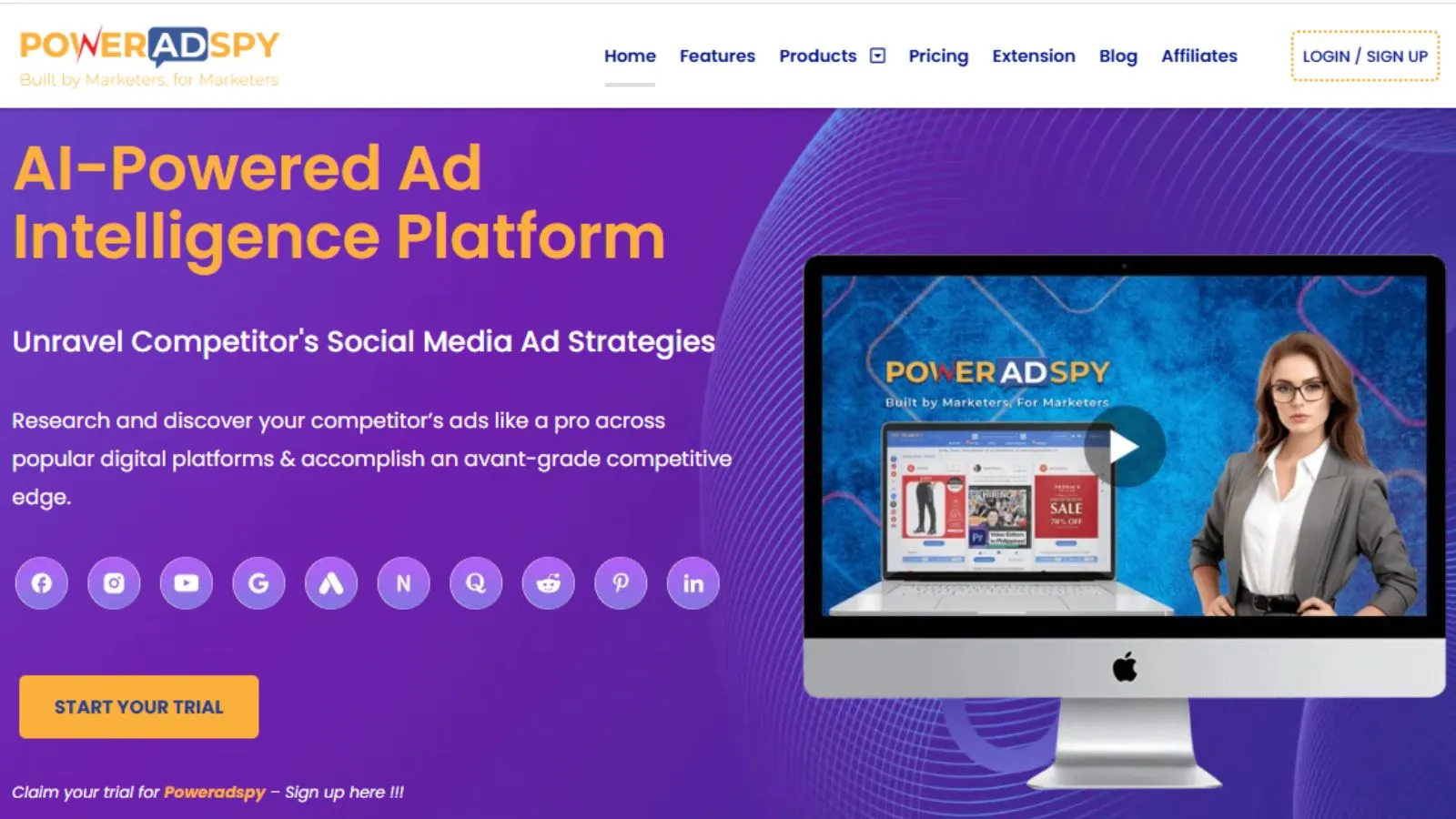
As a marketer, you’re constantly walking a tightrope.
You need campaigns that grab attention and drive results, but you can’t risk crossing legal boundaries that could destroy your ROI.
This is where PowerAdSpy becomes your secret weapon.
Think about it, wouldn’t you rather learn from other people’s mistakes than make them yourself?
PowerAdSpy lets you peek behind the curtain at what your competitors are doing.
You can see which campaigns are thriving and, just as importantly, which ones suddenly disappeared (often a red flag for compliance issues).
Here’s what makes this tool so valuable for staying out of trouble.
Instead of guessing whether your health supplement claims are too bold or your weight loss promises are realistic, you can see exactly what successful brands in your space are saying.
You’ll quickly spot the difference between smart, compliant messaging and the risky stuff that leads to false advertising headaches.
The platform tracks ads across Facebook, Instagram, Google, and more, giving you a complete picture of what’s working in your industry.
When you’re crafting your next campaign, you can confidently benchmark your claims against proven, long-running ads that haven’t faced legal challenges.
For agencies juggling multiple clients, PowerAdSpy is like having a compliance consultant on speed dial.
You can research each industry’s advertising norms, understand what regulators typically flag, and create campaigns that perform well without putting your clients at risk.
Smart marketers don’t just use PowerAdSpy for inspiration; they use it as insurance against expensive legal mistakes.
Recovery Strategies: Minimizing ROI Impact When Accusations Hit:
When false advertising accusations surface, swift and strategic action can mean the difference between temporary setbacks and permanent brand damage.
Your response in the first 48 hours determines how severely your marketing ROI will suffer.
Immediate Crisis Response Protocol:
First, assemble your legal and PR teams within hours, not days. Suspend any questioned campaigns immediately to prevent further exposure.
Document all campaign materials and supporting evidence before they’re scrutinized.
Create a unified response strategy that addresses concerns without admitting fault.
Stakeholder Communication Strategy:
Communicate transparently with key stakeholders, investors, partners, and major clients, before they hear about accusations through media channels.
Prepare holding statements for customer service teams to ensure consistent messaging. Monitor social media sentiment and respond professionally to concerned customers.
Damage Control and Recovery Timeline:
Week 1-2: Focus on legal strategy and media management. Control the narrative by highlighting your company’s commitment to ethical marketing practices.
Week 3-4: Begin reputation rehabilitation through thought leadership content and industry engagement.
Month 2-3: Launch carefully vetted campaigns that demonstrate your renewed commitment to transparency.
Track metrics closely during recovery, conversion rates, customer acquisition costs, and brand sentiment scores.
Most companies see ROI normalization within 4-6 months when following structured recovery protocols, though complete trust restoration often requires 12-18 months of consistent ethical practices.
Conclusion:
The financial devastation that follows false advertising accusations extends far beyond initial legal costs; it creates a domino effect that can cripple marketing ROI for years.
Smart marketers understand that proactive compliance isn’t just about avoiding legal trouble; it’s about protecting every dollar invested in customer acquisition and brand building.
The evidence is clear: companies that invest in robust review processes, team training, and compliance tools consistently outperform those that treat legal considerations as an afterthought.
While creative campaigns drive initial engagement, sustainable marketing success depends on building trust through transparent, honest communication with your audience.
Take immediate action to audit your current campaigns using the strategies outlined above.
Implement pre-launch checklists, establish clear approval workflows, and create a culture where compliance enhances creativity rather than stifling it.
Remember, the most profitable marketing campaigns are those that build lasting customer relationships through authentic messaging.
Your marketing ROI depends not just on compelling creative, but on the foundation of trust and legal integrity that supports every campaign you launch.
FAQ’s:
Q1. What’s the difference between puffery and false advertising?
Puffery refers to exaggerated marketing claims that are clearly subjective opinions, like “world’s best pizza” or “amazing results.” False advertising involves specific, measurable claims that can be proven false, such as “lose 20 pounds in one week” without scientific evidence.
Q2. How long do marketing compliance investigations typically take?
Most investigations range from 3-12 months, depending on complexity.
Simple cases may resolve in weeks, while comprehensive audits of large campaigns can extend beyond a year, significantly impacting your marketing ROI during this period.
Q3. Can small businesses face the same legal risks as corporations?
Absolutely. Regulatory agencies don’t discriminate based on company size.
Small businesses often face proportionally higher impacts because they lack dedicated legal teams and compliance resources to handle accusations properly.
Q4. What should I do if competitors make accusations against our campaigns?
Document everything, consult legal counsel immediately, and avoid public responses until you have professional guidance.
Quick reactions often worsen situations and can escalate minor issues into major legal battles.
Q5. How much should we budget for legal review of marketing materials?
Industry standards suggest 2-5% of your marketing budget for compliance review, depending on your industry’s regulatory complexity and risk exposure levels.

